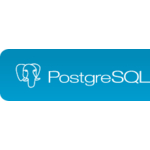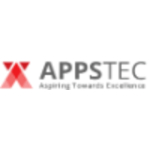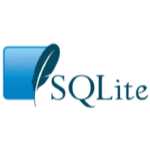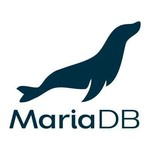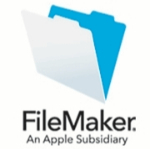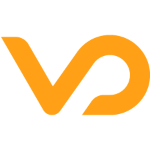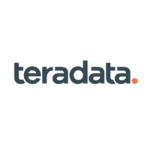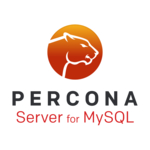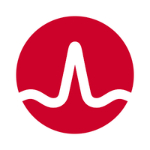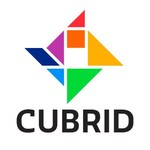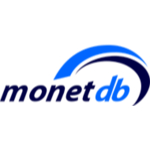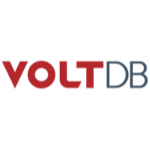TechnologyCounter provides genuine, unbiased real user reviews to help buyers make informed decisions. We may earn a referral fee when you purchase through our links, at no extra cost to you.
List of 15 Best RDBMS Software
Showing 1 - 15 of 22 productsPostgreSQL is a open-source database system renowned for its robustness and flexibility in handling large volumes of data. With its advanced features and strong community support, PostgreSQL has emerged as a top choice for businesses and organization...Read PostgreSQL Reviews
AppsTec DMS, a powerful document management system designed to revolutionize the way businesses handle their digital assets. With its user-friendly interface features, AppsTec DMS streamlines the process of organizing, storing, and sharing documents,...Read AppsTec DMS Reviews
SQLite is a and versatile database management system that has been paving the way for efficient data storage and retrieval. With its lightweight design and cross-platform compatibility, SQLite has become a go-to choice for multiple industries and app...Read SQLite Reviews
MariaDB is a open-source database management system that has been gaining popularity among businesses and organizations. With its roots in MySQL, it offers a seamless transition and an array of advanced features. Its ease of use, scalability, and sec...Read MariaDB Reviews
FileMaker is a flexible and user-friendly database management software that allows individuals and businesses to easily create custom apps to streamline their processes. With its intuitive interface and powerful features, FileMaker empowers users to...Read FileMaker Reviews
Concept 16 the latest software designed to revolutionize the way businesses operate. Combining advanced technology with user-friendly features, it streamlines workflows and increases productivity. Say goodbye to tedious processes and hello to a more...Read conzept 16 Reviews
Teradata Database is a and versatile data management platform designed to handle massive amounts of data efficiently and effectively. With its advanced querying capabilities, robust analytical features, and seamless integration, Teradata Database emp...Read Teradata Database Reviews
Percona Server a reliable is a database software that offers unparalleled performance and stability for your data storage needs. With its advanced technology and user-friendly interface, Percona Server is the top choice for businesses and organizatio...Read Percona Server Reviews
Knack is more than just a software; its a powerful tool that simplifies the process of creating customized online databases. With its user-friendly interface and versatility, Knack allows businesses of all sizes to streamline their data management wi...Read Knack Reviews
CA Datacom is a database management system designed to handle the complex needs of todays businesses. With its robust features and user-friendly interface, this software provides efficient data storage and retrieval solutions for organizations across...Read CA Datacom Reviews
Cubrid, a powerful and innovative software for managing large volumes of data. With its user-friendly interface and robust features, Cubrid makes it easy to store, retrieve, and analyze data efficiently. Stay ahead of the game with Cubrid, is a solut...Read Cubrid Reviews
Firebird is a robust and powerful database management system, designed to handle large volumes of data with precision and efficiency. Developed by a team of dedicated professionals, Firebird offers unparalleled reliability and flexibility for busines...Read Firebird Reviews
FrontBase, a powerful and innovative database management system that helps businesses efficiently and securely store, organize, and access their critical data. With its advanced features and user-friendly interface, FrontBase is the go-to solution fo...Read FrontBase Reviews
MonetDB is a and versatile database management system designed for handling large datasets with speed and efficiency. Its innovative architecture allows for quick data retrieval and manipulation, making it a popular choice for data-intensive applicat...Read MonetDB Reviews
VoltDB is a in-memory database designed to deliver lightning-fast data processing for todays most demanding applications. With its ability to effectively combine the power of relational databases with the speed of NoSQL, VoltDB is setting the standar...Read VoltDB Reviews
- What Is RDBMS Software?
- Top Reasons Why Businesses Need RDBMS Software?
- What Are the Top Key Features of RDBMS Software?
- What Are the Top Benefits of RDBMS Software?
- What Are the Steps to Choose the Right RDBMS Software?
- What Are the Types of RDBMS Software for Different Industries?
- What Are the Technology Trends for Best RDBMS Software?
- What Are the Deployment Options for RDBMS Software?
What Is RDBMS Software?
The acronym RDBMS refers to Relational Database Management System. This particular program is classified as a database management system (DBMS) that facilitates the storage of data by structuring it into tables comprised of columns and rows. In the context of database management, it is customary for each table to possess a primary key column that serves as a distinctive identifier.
The remaining columns within the table are commonly referred to as attributes. Each row within a table is commonly referred to as a record, while the specific values contained within the attributes of that record collectively constitute its content. A query language is employed to extract data from a database.
Relational Database Management System software facilitates the creation, querying, and updating of databases. Additionally, it provides the capability to define the database's structure, enforce integrity rules, implement security measures, and store reference data.
The aforementioned software possesses the capability to store and effectively arrange substantial quantities of data, hence serving as an efficient means of data management. the best relational Database Management System software has extensive applications across various industries, encompassing sectors such as finance, retail, and healthcare.
Data management is a very influential tool that plays a crucial role in the effective operation of any business.
Top Reasons Why Businesses Need RDBMS Software?
1. The implementation of a centralized database effectively mitigates data redundancy and inconsistency through the process of data deduplication.
2. The use of need-based access control and mandatory privileges for individuals and groups has resulted in heightened data security.
3. The Structured Query Language (SQL) facilitates efficient data management by enabling convenient operations for data retrieval, storage, and update.
4. The enhanced accessibility of data facilitated by backup and recovery systems.
5. One of the benefits of a user-friendly environment is enhanced productivity.
6. The objective is to facilitate streamlined data sharing, transfer, and integration across many platforms.
7. The relational structure of the data facilitates simplified data analysis and reporting by enabling the division of data into distinct tables and subsequent joining of these tables depending on various criteria.
8. The aim of this study is to investigate the efficacy of data modeling and software development processes in terms of efficiency.
9. The complexity of software architecture was mitigated through the utilization of standardized data structures.
10. Enhanced data accuracy and integrity by implementing and enforcing data rules and limitations.
11. The utilization of indexes and query optimization techniques leads to enhanced data access and performance.
12. The support for distributed architecture facilitates the scalability of database applications.
13. Improved user experience with intuitive graphical interfaces.
14. The utilization of ACID concepts and transactions ensures dependable data storage and safeguarding.
15. The utilization of consistent databases and architectures has resulted in a reduction in development time and expenses.
What Are the Top Key Features of RDBMS Software?
1. Structured Query Language (SQL): SQL, also known as Structured Query Language, serves as the primary language for administering relational databases. It empowers users to perform essential operations such as data creation, modification, deletion, and overall data management.
2. Relational Data Model: The best relational database management software as the fundamental framework for relational database management systems (RDBMS), enabling users to establish connections between interrelated datasets and store information in a meticulously structured and easily retrievable manner.
3. Transactions Processing: This functionality guarantees the preservation of data integrity by enabling the concurrent processing of many transactions without compromising the dependability of the entire system.
4. Data Integrity and Security: Databases are engineered with security measures, including encryption and authorization mechanisms, to ensure that only those with proper authority can access, modify, and retrieve data.
5. Backup and Recovery: In instances of data loss, the rapid backup and restoration of data can be facilitated.
6. Data Sharing: Databases can be safely shared among multiple users and systems.
7. Data Warehousing and Mining: The storage, retrieval, and manipulation of data are essential for facilitating business decision-making and the formulation of effective strategies.
8. Indexing: Enables expedited and streamlined data access and retrieval processes.
9. Concurrency Control: The primary objective of this system is to facilitate concurrent access to data by various users while ensuring the integrity and consistency of the data.
10. Data Normalization: Ensures data is stored and organized efficiently.
What Are the Top Benefits of RDBMS Software?
1. Data Integrity and Reliability: The RDBMS software ensures data integrity and facilitates dependable access to stored data by employing several mechanisms such as primary keys, foreign keys, and transactions.
2. Security: Relational Database Management System provides users with the capability to selectively authorize or withdraw access to distinct segments of the database, catering to both groups and individual users.
3. Scalability: The best relational database management system facilitates seamless scaling, enabling the transition from a single machine to larger machines equipped with multiple CPUs and increased memory capacity.
4. Easy Access: The accessibility of queries and data is facilitated by RDBMS software, which enables a seamless connection between DBMS and various applications, including web and mobile applications.
5. Data Sharing: A Relational Database Management System facilitates the dissemination of data among many applications, hence enhancing the overall effectiveness of the system.
6. Data Availability: The top relational Database Management System plays a crucial role in maintaining data availability, particularly in the event of system failures.
7. Data Modeling: A Relational Database Management System offers the capability to efficiently structure data through the utilization of robust query languages, such as Structured Query Language (SQL).
8. High Performance: The top relational Database Management System offers robust query optimization and performance tuning capabilities to enable efficient processing of queries with optimal speed.
What Are the Steps to Choose the Right RDBMS Software?
1. Identify the purpose of RDBMS and requirements: The initial phase is the process of choosing the appropriate the best Relational Database Management System. When evaluating the suitability of a database, it is important to take into account several factors.
These include the nature of the data that will be stored and processed within the database, the desired performance objectives, scalability requirements, associated expenses, compatibility with different operating systems, ability to handle online transaction processing demands, high availability considerations, mobile synchronization capabilities, resource requirements, and security prerequisites.
2. Research widespread RDBMS software: During this phase, it is imperative to conduct thorough research on various of the best Relational Database Management System products that possess the capability to fulfill the specified objectives.
Microsoft SQL Server, Oracle, IBM DB2, PostgreSQL, and MySQL are among the most recognized commercial Relational Database Management Systems.
3. Evaluate the features of the RDBMS software: During this stage, it is essential to conduct a thorough evaluation of the functionality and features offered by each of the relational database management system (RDBMS) options concerning your specific requirements.
An assessment should be conducted on the many tools at one's disposal, including data modeling, backup, recovery, replication, and integration technologies.
4. Analyze pricing and licensing options: After the identification of the RDBMS that aligns with the specified requirements, it becomes imperative to analyze the pricing and license alternatives. One should take into account the expenses related to acquiring the licenses as well as the expenditures involved with the installation, implementation, training, and maintenance.
5. Test the RMS software: The concluding stage of the selection process involves conducting a trial implementation of the selected Relational Database Management System. This will facilitate the evaluation of usability, efficiency, performance, and accuracy. Testing can also serve the purpose of identifying potential faults or gaps before the commencement of manufacturing for a product.
What Are the Types of RDBMS Software for Different Industries?
Commonly used in many industries are numerous types of the best Relational Database Management System:
1. Microsoft SQL Server – Frequently employed in the banking, healthcare, manufacturing, and insurance sectors.
2. Oracle Database – Frequently employed throughout the retail, telecommunications, media, and insurance sectors.
3. IBM DB2 – Frequently employed in the domains of banking, insurance, healthcare, and web/mobile apps.
4. MySQL – Frequently employed in the domains of electronic commerce, online journals, systems for managing content, and programs that operate through the internet.
5. PostgreSQL – Frequently employed in medical and scientific research, media and entertainment industries, web-based applications, and database analytics.
6. Sybase – Frequently employed within the domains of telecommunications, industry, and finance, these businesses commonly utilize this particular technology.
7. Microsoft Access – Frequently employed within the context of small enterprises, collaborative teams, and organizational units.
8. Interbase: Interbase is frequently employed within the banking, healthcare, and insurance sectors.
What Are the Technology Trends for Best RDBMS Software?
The present technology trends indicate an increasing popularity in the realm of the finest Relational Database Management System (RDBMS) software:
1. Cloud computing: Cloud computing has gained significant popularity as a viable choice for relational database management systems, mostly due to its ability to enable enterprises to utilize software applications without the necessity of procuring and managing physical servers.
The aforementioned solution offers a reduced total cost of ownership and exhibits greater flexibility and scalability compared to conventional on-premises alternatives.
2. Relational schema enhancements: The evolution of the best relational database management system is aimed at enhancing its ability to effectively accommodate intricate data models, while also enhancing performance and data retrieval capabilities.
3. Big data integration: The utilization of big data is experiencing a surge in popularity, leading to the necessary adaptation of relational database management system (RDBMS) software to effectively support this emerging trend. This facilitates the effective incorporation of substantial quantities of data into the database system.
4. Improved security features: The issue of security is a significant consideration for every software system. The RDBMS software is undergoing adaptations to enhance its ability to safeguard data from unauthorized disclosure or destructive actions.
5. Scalability: The consideration of scalability becomes crucial while selecting the optimal relational database management system, as the volume of data within a system expands. The ability of the program to effectively process larger volumes of data while maintaining optimal performance is of utmost significance.
What Are the Deployment Options for RDBMS Software?
When implementing a Relational Database Management System, it is customary to employ three primary approaches:
1. Local Install: In this scenario, the Relational Database Management System is directly installed on the server or workstation of the firm. This approach is well-suited for enterprises of modest scale, as it necessitates less technical expertise and offers cost-effective solutions.
2. Software as a Service (SaaS): This approach involves the hosting of the Relational Database Management System (RDBMS) software on a server located remotely. This approach applies to organizations that lack the necessary resources to independently handle their databases or when there is a need for scalability.
3. Cloud Hosting: The relational database management system is deployed on a cloud computing platform. Organizations that implement this approach see advantages such as enhanced scalability, optimized access speeds, and reduced operational expenses.
